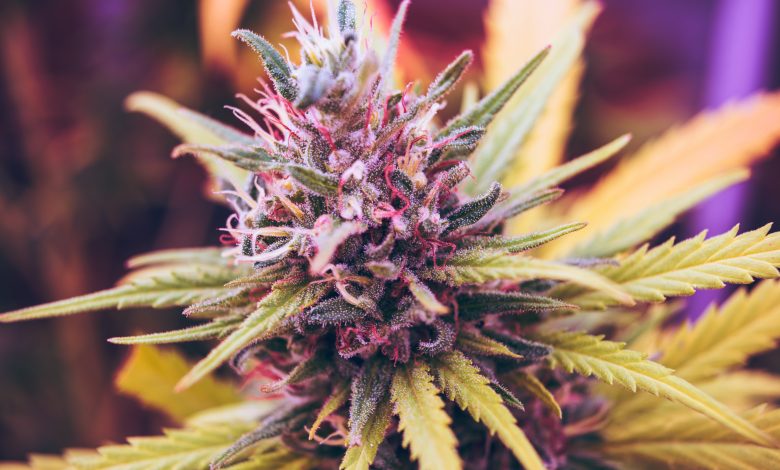Is Weed Legal in Texas? Marijuana Laws as of Early 2020

Marijuana has been illegal to use, sell, or possess in the United States since the Controlled Substances Act of 1970, which classified it as a Schedule I drug. However, many states have begun to change their marijuana laws, legalizing its use and possession for adults. With marijuana legislation taking part across the country, it’s essential to know exactly what is legal and what is illegal. Forms of the cannabis plant have been legalized in Texas recently, which may lead many to wonder, “Is weed legal in Texas?” Below, we’ll go over exactly what is now legal in Texas and what is still illegal.
Current marijuana laws in Texas can be confusing, as some wrongly believe that the substance has been decriminalized. The confusion stemmed from Texas legalizing hemp in 2019 to fall in line with the federal legalization of hemp in 2018.
One of the confusing aspects for law enforcement and others is that hemp and marijuana both come from the cannabis plant and can be indistinguishable by look or smell. The critical difference is the level of THC. Tetrahydrocannabinol, or THC, is the psychoactive element found in the marijuana plant. A part of the cannabis plant that has over 0.3 percent THC is considered marijuana in Texas. If it has less, it is considered hemp.

Texas Marijuana Decriminalization
Adding further to the confusion was talk of decriminalization throughout 2019 in Texas. In late April 2019, a bill to decriminalize smaller amounts of marijuana was passed by the House but ultimately failed when the legislative session ended on May 27. Instead of arresting and incarcerating people that were caught with cannabis, the new bill sought to punish those caught with an ounce or less with a $500 fine. Possessing significantly more marijuana, though, would have resulted in felony charges.
To gain more support from lawmakers, the sponsor of the bill, Representative Joseph Moody, made some minor concessions. The bill originally had a lower fine of $250 and would have considered the possession of smaller amounts of marijuana as a civil infraction rather than a class C misdemeanor.
According to Moody, the bill would stop around 75,000 Texans from being arrested each year and would save the state $735,000,000 in tax dollars.
While Moody is a member of the Democratic Party, the Republican Party of Texas was also on board with decriminalization. In a platform plank from the 2018 party convention it reads:
“We support a change in the law to make it a civil, and not a criminal, offense for legal adults only to possess one ounce or less of marijuana for personal use, punishable by a fine of up to $100, but without jail time.”
For those that were previously arrested for the former marijuana laws, there would be a procedure for the expungement of offenses, which would clear criminal records.
A lack of clarity resulting from both the passed and failed legislation has led to more confusion and marijuana arrests in Texas. And because law enforcement can’t distinguish marijuana from hemp based on appearance or smell, arrests are being made in situations when it may not be warranted.
The only way to distinguish whether or not a substance has higher levels of THC is by using expensive lab equipment. Many city officials throughout the state have understood that it’s unfair to make an arrest for marijuana without having the proper equipment in place.

Austin Marijuana Decriminalization
In Austin, Texas, the solution to the problem of distinguishing marijuana from hemp was to decriminalize marijuana possession of low amounts. In late January 2020, the Austin City Council voted to end arrests and fines for possession of small amounts of marijuana. Austin faced two options: either spend city resources to build a lab that could detect THC levels or decriminalize.
They chose decriminalization. In Austin, charges will only be pursued when the amount of cannabis in question reaches the level of a felony offense.
Penalties for Marijuana Possession in Texas
Here are the current penalties for marijuana possession in Texas:
- 2 oz or less – Class B misdemeanor with up to 180 days in jail and a $2,000 fine
- 2 to 4 oz – Class A misdemeanor with up to one year in jail and a $4,000 fine
- 4 oz to 5 lbs – Felony with up to two years in jail and a $10,000 fine
- 5 to 50 lbs – Felony with two to ten years in jail and a $10,000 fine
- 50 to 2000 lbs – Felony with two to 20 years in jail and a $10,000 fine
- 2000+ lbs – Felony with five to 99 years in jail and a $50,000 fine
Penalties for the Sale of Marijuana in Texas
The delivery of seven grams or less of marijuana, even as a gift, is a misdemeanor that can result in up to 180 days in jail and a fine of up to $2,000.
If you sell the seven grams or less of marijuana, it is a misdemeanor that is punishable by up to one year in jail and a fine of up to $4,000.
Selling or delivering between seven grams and five pounds of marijuana is a felony, which is punishable by between 180 days and two years in jail, along with a fine not to exceed $10,000.
Upping the amount of marijuana sold or delivered between five and 50 pounds is a second-degree felony, which comes with two to 20 years in jail and up to a $10,000 fine. If the amount is between 50 and 2,000 pounds, the penalty goes up to a first-degree felony, which is punishable by a minimum of five years in jail and a maximum of life imprisonment. If the amount exceeds 2,000 pounds, the minimum sentence goes up to ten years, and the maximum fine goes from $10,000 to $100,000.
If you sell marijuana to a minor, you can be charged with a second-degree felony, which is punishable by a minimum of two years and a maximum of 20 years in jail, along with a fine of up to $10,000.
Texas CBD and Hemp Legalization
A week before approving House Bill 63, Texas lawmakers approved HB1325, which made it legal for hemp to be grown. A cousin to the marijuana plant, hemp was illegal to grow in Texas, although hemp-based products were permitted to buy and sell. Without the ability to grow hemp legally, Texas companies were forced to source their hemp from outside the state.
As a drought-resistant crop, hemp is the perfect type of plant to be grown in the Texas climate. Hemp derivatives, such as CBD, were also legalized as long as they contain no more than 0.3 percent THC.
The Hemp Business Journal estimates that the CBD market in Texas will expand exponentially, growing from $202 million in 2017 up to $2.1 billion in 2020.
Texas Medical Marijuana
In April 2019, a medical marijuana bill was unanimously approved by a Texas House committee. The law would have added a dozen conditions that would qualify for the option to use medical marijuana. The conditions are the following:
- Alzheimer’s
- Amyotrophic lateral sclerosis
- Autism
- Cancer
- Crohn’s
- Huntington’s disease
- Multiple sclerosis
- Muscular dystrophy
- Parkinson’s
- Post-traumatic stress disorder
- Tourette syndrome
- Ulcerative colitis
The change in the Texas medical marijuana bill would have been a significant step forward from the former law. Previously, only those with intractable epilepsy who had exhausted their other pharmaceutical options had access.
However, in the version of the bill that made it to the governor’s desk, fewer conditions became eligible. The law became effective when the bill was signed on June 15, 2019. In addition to various seizure disorders, the following conditions are now eligible for medical marijuana in Texas:
- ALS
- Autism
- Multiple sclerosis
- Parkinson’s
- Terminal cancer
The author of the bill was Representative Stephanie Klick, who is a registered nurse. Previously, around 150,000 patients had access to medical marijuana. The new law could potentially expand that patient base to over a million people.
Future Marijuana Laws in Texas
Texas is well-known as a conservative state, so the legalization of marijuana has always faced an uphill battle. However, the recent trend in new cannabis-related bills shows a willingness for Texas lawmakers to be more open-minded about the plant. With that said, Texas is likely to be one of the last states that will fully legalize marijuana. In fact, marijuana may be legalized at the federal level before it is made legal in Texas.
What States Have Legalized Marijuana?
Marijuana has been legalized in 11 states for adults at least 21 years old. Here are the states that have completely legalized the use and possession of marijuana.
Alaska
Adults 21 and over can use and possess up to one ounce of marijuana.
California
The first state to legalize medical marijuana in 1996, adults 21 and over can use and possess up to one ounce of marijuana. Adults are also allowed to buy up to eight grams of marijuana concentrates and can grow up to six marijuana plants per household.

Colorado
Along with Washington, Colorado was the first state to fully legalize marijuana in 2012. Since then, the amount of marijuana dispensaries in Colorado has exceeded the number of McDonald’s and Starbucks locations combined. Adults over 21 are allowed to buy up to one ounce of marijuana or eight grams of concentrates.
Illinois
Illinois was the first state to legalize recreational marijuana through the state legislature when it became legal on January 1, 2020. Illinois allows the use and possession of up to one ounce of marijuana and up to five grams of concentrates for residents. Visitors are permitted to possess half that amount.
Medical marijuana patients are allowed to grow up to five plants. Non-patients are not allowed to grow any marijuana at home.
Maine
In Maine, you can possess up to 2.5 ounces of marijuana.
Massachusetts
Massachusetts allows the use and possession of up to one ounce of marijuana. Residents can also grow up to 12 plants at home.
Michigan
In Michigan, you can possess up to 2.5 ounces of marijuana and can grow up to 12 plants at home.
Nevada
Nevada allows residents and tourists who are 21 and over to buy one ounce of marijuana or one-eighth of an ounce of concentrates. To be eligible for a grower’s license, you must live at least 25 miles from the nearest dispensary.
Oregon
As of 2015, the law in Oregon allows adults to possess up to one ounce of marijuana, and residents can grow up to four plants.
Vermont
Vermont allows adults to possess up to one ounce of marijuana and grow up to two plants at home. However, the law that was passed in 2018 did not establish a legal market to produce and sell marijuana.
Washington
The state of Washington allows adults to carry up to an ounce of marijuana. To be eligible to grow, it must be for medicinal purposes.
Washington D.C.
In 2015, it became legal to possess up to two ounces of marijuana in Washington D.C. You are also allowed to gift up to one ounce as long as goods or services are not exchanged.
Medical Marijuana Legalization by State
The following states have legalized medical marijuana:
- Arizona
- Arkansas
- Connecticut
- Delaware
- Florida
- Hawaii
- Louisiana
- Maryland
- Minnesota
- Missouri
- Montana
- New Hampshire
- New Jersey
- New Mexico
- New York
- North Dakota
- Ohio
- Oklahoma
- Pennsylvania
- Rhode Island
- Utah
- West Virginia
Marijuana Decriminalization by State
The following states have fully or partially decriminalized the possession of marijuana:
- Connecticut
- Delaware
- Hawaii
- Maryland
- Minnesota
- Missouri
- Nebraska
- New Hampshire
- New Mexico
- New York
- North Carolina
- North Dakota
- Ohio
- Rhode Island
- Virginia
History of Marijuana in America
It has been over eight decades since the federal government made cannabis illegal nationwide. And many believe that the law went into place originally for racial motivations, much like the origin of felony disenfranchisement in America.
As early as 1619, the production of hemp was encouraged in the colonies that would become America. In 1619, the Virginia Assembly passed a law requiring all farmers to grow hemp. At the time, hemp was a significant factor in the production of clothing, rope, and sails.
In 1906, the Pure Food and Drug Act required the labeling of any cannabis that could be found in over-the-counter remedies.
However, the view of marijuana at a federal level began to change after the Mexican Revolution of 1910. At the conclusion of the revolution, many Mexican immigrants came into the United States and introduced the recreational use of marijuana at a larger scale. The drug then became associated with the immigrants, and prejudices took over, leading to anti-drug campaigns.
During the Great Depression, animosity towards Mexican immigrants grew as the competition for jobs increased. By 1931, 29 states had made marijuana illegal. The Marijuana Tax Act of 1937 effectively made the substance illegal nationally. Years later, the Marijuana Tax Act was deemed unconstitutional and was replaced by the Controlled Substances Act of 1970, which classified it as a Schedule I drug, the most dangerous classification a substance can receive.
Federal Legalization of Marijuana
According to a Gallup poll, 66 percent of Americans support the idea of legalizing marijuana.
With so many different laws and levels of legal and illegal marijuana possession, the country could benefit from a new federal interpretation of the law. If marijuana was legalized at the national level, not only would states no longer have to pursue their own legislation, the testing of marijuana would increase exponentially.
Currently, as a Schedule I drug, marijuana is not considered at the federal level to have any medicinal use. This classification flies in the face of objectivity when it comes to marijuana, which is used medically in 33 of the 50 states.
The consensus is that marijuana will be legal at the federal level at some point, the only question is, when?
While there has been a surge in legalizing or decriminalizing marijuana across the country, in the majority of states, it is still illegal to possess small amounts. An estimated 600,000 offenders are arrested each year, and most of these arrests are for small quantities.
Supporters of legalization were hopeful that 2019 could potentially be the year that Congress legalized marijuana. The most recent proposal was the Marijuana Opportunity Reinvestment and Expungement (MORE) Act, which had 55 cosponsors. The purpose of this piece of reform was to decriminalize and de-schedule cannabis, provide reinvestment in areas affected by the War on Drugs, and provide expungement for those arrested on cannabis charges that would no longer violate the law.
However, the bill has stalled in Congress and may never see the light of day. Similarly, the Secure and Fair Enforcement Act has also lost all momentum in Congress. This piece of legislation was authored to allow banks to do business with the marijuana industry. Currently, because marijuana is illegal at the federal level, all transactions must be done in cash, as banks cannot conduct business with a substance considered illegal federally. The SAFE Act was passed through the House but has been stalled in the Senate.
The COVID-19 pandemic likely further lessens the chance that marijuana will be legalized at the federal level in 2020. The earliest any major reform will take place is likely in 2021 after the conclusion of the November elections. The government officials who are elected in 2020 will be a decisive determining factor for the future of marijuana legislation.



